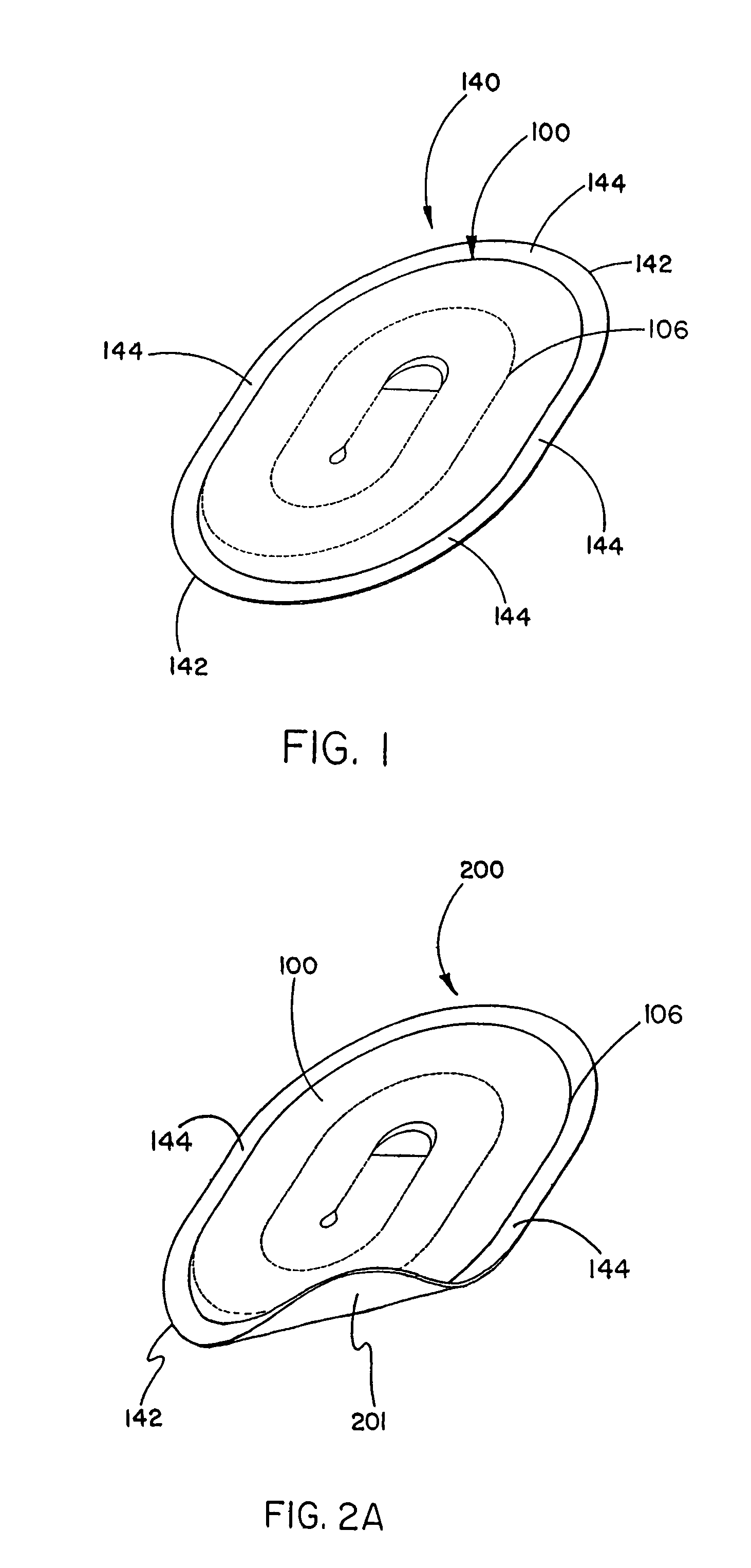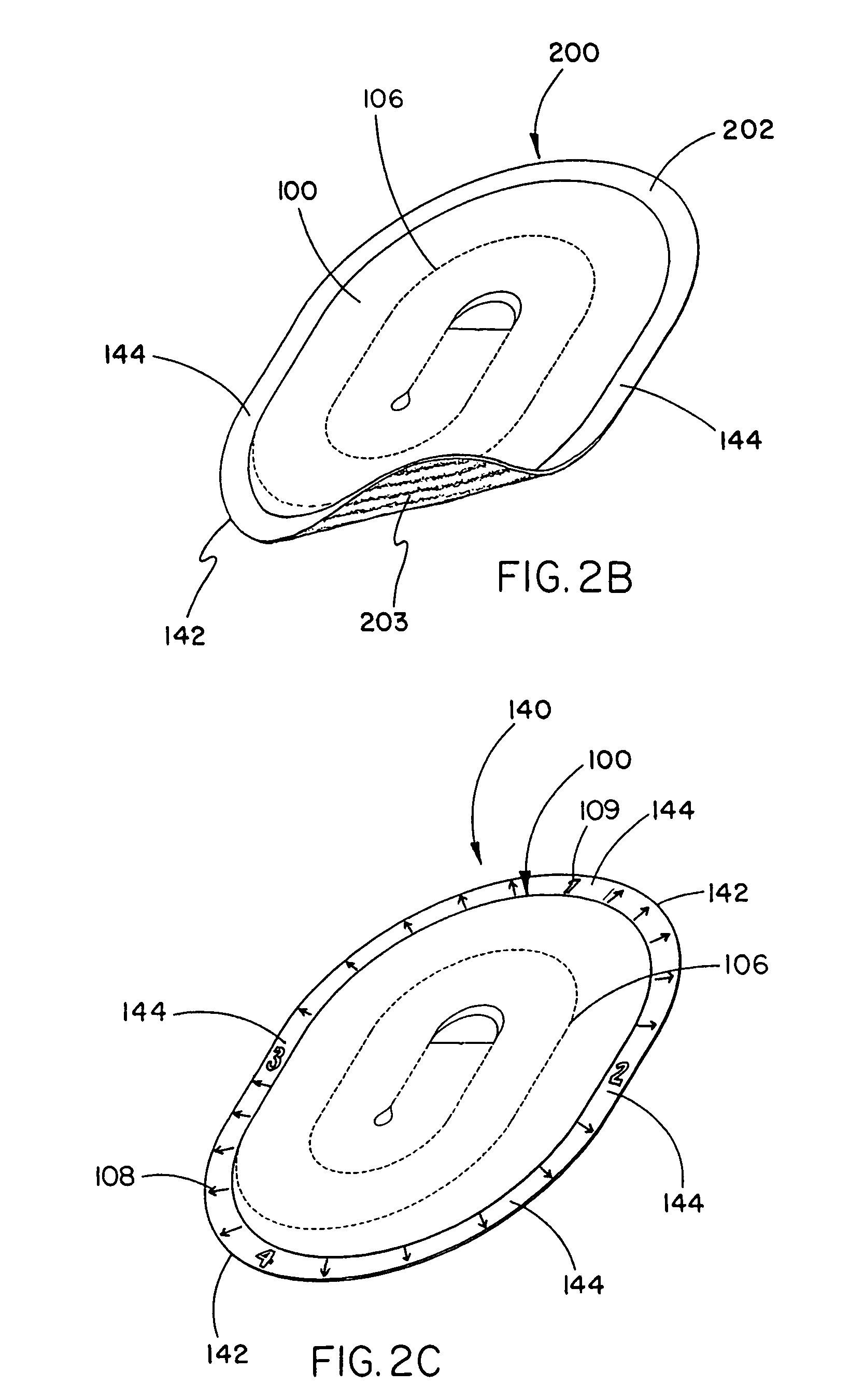Tissue repair device with a bioabsorbable support member
a bioabsorbable and support member technology, applied in the field of implantable medical devices, can solve the problems of undesirable implants, such as patches, made from non-bioabsorbable materials, and none of these devices recognize the advantages, so as to reduce the rate, reduce the amount of polymer mass, and improve the effect of absorbing the effect of the patien
- Summary
- Abstract
- Description
- Claims
- Application Information
AI Technical Summary
Benefits of technology
Problems solved by technology
Method used
Image
Examples
example 1
[0059]This example describes the construction of a preferred embodiment of the present invention. Following formation of a non-bioabsorbable implantable sheet material, a bioabsorbable support member was attached to the implant as follows.
[0060]The bioabsorbable support member was fabricated from a flat sheet of medical grade block co-polymer of polyglycolic acid-trimethylene carbonate (PGA / TMC) in a 67:33 ratio; respectively. The PGA:TMC copolymerization is achieved by a sequential addition ring opening polymerization of the cyclic trimethylene carbonate and glycolide dimer monomers. Synthesis of PGA:TMC can be conducted to produce copolymers in segmented and / or simple block form. Methods for PGA:TMC synthesis are described in U.S. Pat. Nos. 4,243,775 and 4,300,565 both to Rosensaft, et al and U.S. Pat. No. 4,429,080 to Casey, et al., each of which is incorporated herein by reference.
[0061]Other desirable copolymeric ratios and / or block structures may necessitate the use of differe...
example 2
[0066]This example describes the construction of a resilient polymeric bioabsorbable support member attached to a non-bioabsorbable implantable sheet material having an anti-microbial treatment applied thereto.
[0067]A bioabsorbable support member was constructed from a polylactic acid-polyglycolic acid co-polymer (PLA / PGA) having a weight percent ratio of 85:15, respectively. An implantable ePTFE sheet material with an anti-microbial treatment was obtained from the Medical Products Division of W. L. Gore & Associates, Inc., Flagstaff, Ariz. under the tradename GORE-TEX® DUALMESH® PLUS Biomaterial as part number 1DLMCP04. The dimensions of both components were the same so the bioabsorbable sheet member covered the implantable sheet material.
[0068]The bioabsorbable support member was attached to the implantable sheet material by placing the two component together under restraint and exerting moderate pressure (e.g., 20-50 psi) in an apparatus (FIG. 8A) to the combination. The combinat...
PUM
| Property | Measurement | Unit |
|---|---|---|
| sizes | aaaaa | aaaaa |
| size | aaaaa | aaaaa |
| size | aaaaa | aaaaa |
Abstract
Description
Claims
Application Information
 Login to View More
Login to View More - R&D
- Intellectual Property
- Life Sciences
- Materials
- Tech Scout
- Unparalleled Data Quality
- Higher Quality Content
- 60% Fewer Hallucinations
Browse by: Latest US Patents, China's latest patents, Technical Efficacy Thesaurus, Application Domain, Technology Topic, Popular Technical Reports.
© 2025 PatSnap. All rights reserved.Legal|Privacy policy|Modern Slavery Act Transparency Statement|Sitemap|About US| Contact US: help@patsnap.com



